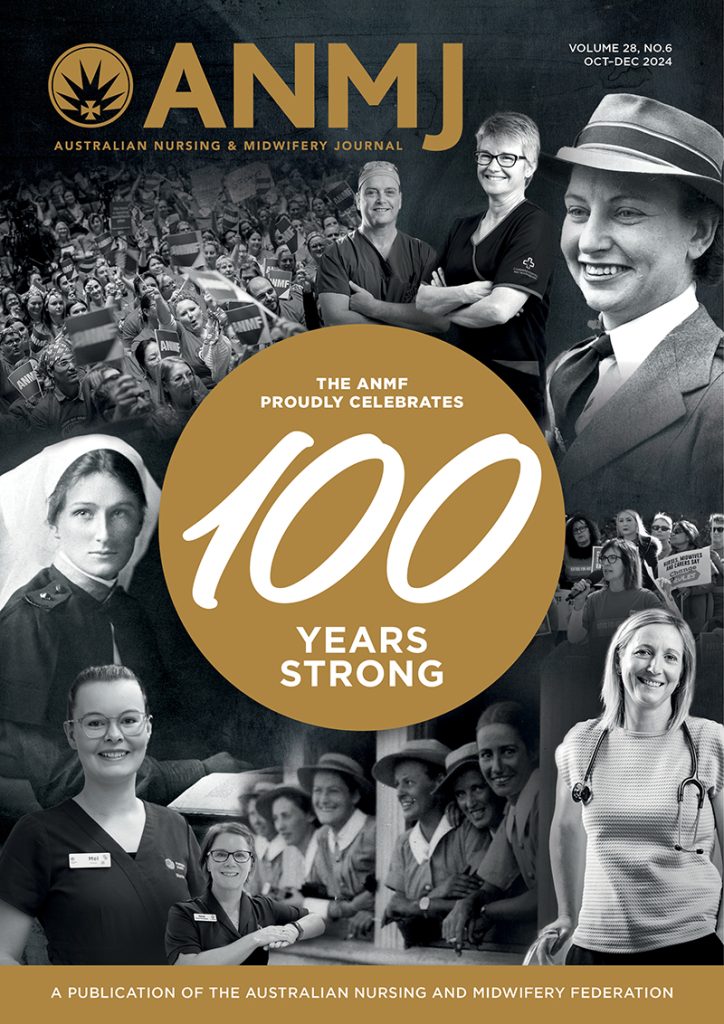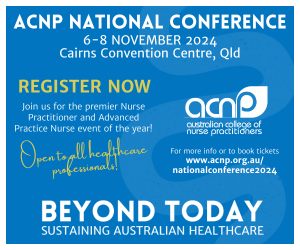The Australian Nursing and Midwifery Federation (ANMF) has urged the Australian Government to ensure ongoing and comprehensive funding for the Australian Breastfeeding Association (ABA) as one of the outcomes of the 2023 Biennial National Conference resolutions.
This vital commitment would help to foster a supportive environment for breastfeeding across the nation and would recognise the significant health benefits that breastfeeding has for mothers and babies, as well as broader societal and economic advantages.
Importance of continued funding
For the past 15 years, the ABA has received government funding, including $5.3 million allocated for 2023-24 to maintain their 24/7 National Breastfeeding Helpline.1 This funding is, however, limited and fails to adequately support the range of services required to meet the needs of Australian families. Sustained investment is essential for enhancing the health and wellbeing of women and infants and supports wider community health and wellbeing.
The Australian National Breastfeeding Strategy (ANBS) aims to increase breastfeeding rates and ensure access to education, support, and clinical care.2 It emphasises the need for all levels of government to create a breastfeeding-friendly environment through effective policies and sufficient funding. The ABA’s initiatives including their Helpline align with these goals and utilises evidence-based approaches to support breastfeeding practices.
Health benefits of breastfeeding
Breast milk is the optimal source of nutrition for newborns, offering numerous health benefits for both infants and mothers.3,4 Research shows that breastfeeding promotes cognitive and sensory development, reduces the risk of infections and chronic illnesses, and improves overall infant health outcomes.3 For mothers, breastfeeding is linked to lower risks of breast and ovarian cancers and contributes positively to mental health.5,6
The economic case for breastfeeding is also compelling. Estimates suggest that proper breastfeeding practices could save the Australian healthcare system between $60 to $120 million annually by reducing hospitalisations for various conditions related to inadequate breastfeeding including gastrointestinal illnesses, respiratory and ear infection, eczema, and neonatal necrotising enterocolitis.7
Addressing challenges and inequities
While approximately 95% of Australian mothers initiate breastfeeding, only 57% continue to do so exclusively.8 Many of the challenges leading to early cessation of breastfeeding are modifiable with appropriate support during the critical postpartum period for mothers who want to continue to breastfeed. The ANMF emphasises that addressing these barriers is not only a health issue but also a matter of equity, as access to breastfeeding support is essential for all women.
Understanding that for some mums, exclusive breastfeeding might not be possible or desired for many reasons, the World Health Organization (WHO) recommends exclusive breastfeeding for the first six months of life, highlighting its long-term benefits for children, mothers, and society.9 There is substantial and unequivocal evidence that protecting, promoting, and supporting, breastfeeding provides important benefits for children, women, society, the economy, and the environment.5,10,11 Sustainable funding for breastfeeding support services, including counselling and telehealth options, can significantly enhance breastfeeding rates and durations.10,11 Telehealth interventions including helpline services and peer support for women wanting support, information, and guidance regarding breastfeeding are well-studied and known to be effective.12-14 A recent Cochrane systematic review update that included 116 randomised controlled studies found that providing women with extra support regarding breastfeeding helps them to breastfeed for longer and that health professionals and volunteers are both equally effective in providing this support be it face to face or provided over the phone or other digital platform.11 Another recent systematic review focussed specifically on telehealth in primary care for breastfeeding support which also found clear evidence of its effectiveness and benefit as well as results demonstrating feasibility of the intervention and user satisfaction.15 Telehealth services are also especially helpful during crises such as pandemics which can impede women’s’ ability to access face to face services,16 so should be invested in to provide sustainable services for the future.
The need for increased investment
Support services offered by the ABA have been demonstrated to reduce the burden on primary health care providers and the health system. In 2022, 42 percent of callers said they would have visited a hospital or other medical services without the National Breastfeeding Helpline.17 To effectively support and promote breastfeeding, the ANMF has called for the government to consider sustainable long-term funding solutions. This investment will enable the ABA to continue its critical work and adapt to the evolving needs of families, particularly in diverse and remote communities.
Aligning with National Health Strategies
The ANMF commends the establishment of the National Women’s Health Advisory Council and believes that enhancing breastfeeding support aligns with key priorities of the National Women’s Health Strategy 2020-2030 including Priority area 1 – Maternal, sexual, and reproductive health through contributing to lowering breast cancer risk, improving maternity services, and proving breastfeeding support for mothers and babies to drive better health outcomes and wellbeing. Gender inequality and bias is still prevalent across many contexts and still apparent in relation to breastfeeding. By addressing gender inequalities and removing barriers to care, the government can help improve maternal and child health outcomes.
Ongoing and sufficient funding for the ABA from the Australian Government will recognise the extensive health, economic, and social benefits that a robust and effective breastfeeding support system can provide. By investing in breastfeeding initiatives, we can pave the way for healthier generations and a more equitable healthcare landscape.
References
1. Australian Government. Budget 2023-24 – Budget Paper No. 2: Budget Measures. Online. Australian Governemnt. 2023. Available: https://archive.budget.gov.au/2023-24/ (Accessed 6 June 2024).
2. Australian Government Department of Health and Aged Care. Australian National Breastfeeding Strategy: 2019 and beyond. 2019. Available: https://www.health.gov.au/topics/pregnancy-birth-and-baby/breastfeeding-infant-nutrition/australian-national-breastfeeding-strategy (Accessed 6 June 2024).
3. Gertosio C, Meazza C, Pagani S, Bozzola M. Breastfeeding and its gamut of benefits. Minerva Pediatr 2016; 68(3): 201-12.
4. Binns C, Lee M, Low WY. The Long-Term Public Health Benefits of Breastfeeding. Asia Pacific Journal of Public Health 2016; 28(1): 7-14.
5. Prentice AM. Breastfeeding in the Modern World. Ann Nutr Metab 2022; 78 Suppl 2: 29-38.
6. Stuebe A. The risks of not breastfeeding for mothers and infants. Reviews in obstetrics and gynecology 2009; 2(4): 222.
7. Smith JP, Thompson JF, Ellwood DA. Hospital system costs of artificial infant feeding: estimates for the Australian Capital Territory. Australian and New Zealand Journal of Public Health 2002; 26(6): 543-51.
8. Reynolds R, Kingsland M, Daly J, et al. Breastfeeding practices and associations with pregnancy, maternal and infant characteristics in Australia: a cross-sectional study. International Breastfeeding Journal 2023; 18(1): 8.
9. Bellù R, Condò M. Breastfeeding promotion: evidence and problems. Pediatr Med Chir 2017; 39(2): 156.
10. Rollins NC, Bhandari N, Hajeebhoy N, et al. Why invest, and what it will take to improve breastfeeding practices? Lancet 2016; 387(10017): 491-504.
11. Gavine A, Shinwell SC, Buchanan P, et al. Support for healthy breastfeeding mothers with healthy term babies. Cochrane Database Syst Rev 2022; 10(10): Cd001141.
12. Brown HL, DeNicola N. Telehealth in Maternity Care. Obstet Gynecol Clin North Am 2020; 47(3): 497-502.
13. Chang YS, Beake S, Kam J, Lok KY, Bick D. Views and experiences of women, peer supporters and healthcare professionals on breastfeeding peer support: A systematic review of qualitative studies. Midwifery 2022; 108: 103299.
14. Yang Y, Liu H, Cui X, Meng J. Mothers’ experiences and perceptions of breastfeeding peer support: a qualitative systematic review. Int Breastfeed J 2024; 19(1): 7.
15. Hubschman-Shahar LE. Lactation Telehealth in Primary Care: A Systematic Review. Breastfeed Med 2022; 17(1): 6-21.
16. Lewkowitz AK, Cahill AG. Mobile Health Approaches to Breastfeeding. Clin Obstet Gynecol 2021; 64(2): 384-91.
17. Australian Breastfeeding Association. Enabling and empowering breastfeeding to protect wellbeing and improve health outcomes in Australia. Australian Breastfeeding Association. 2022.
Author:
Associate Professor Micah DJ Peters is the Director of the ANMF National Policy Research Unit (Federal Office) based in the Rosemary Bryant AO Research Centre, Clinical and Health Sciences, University of South Australia.









